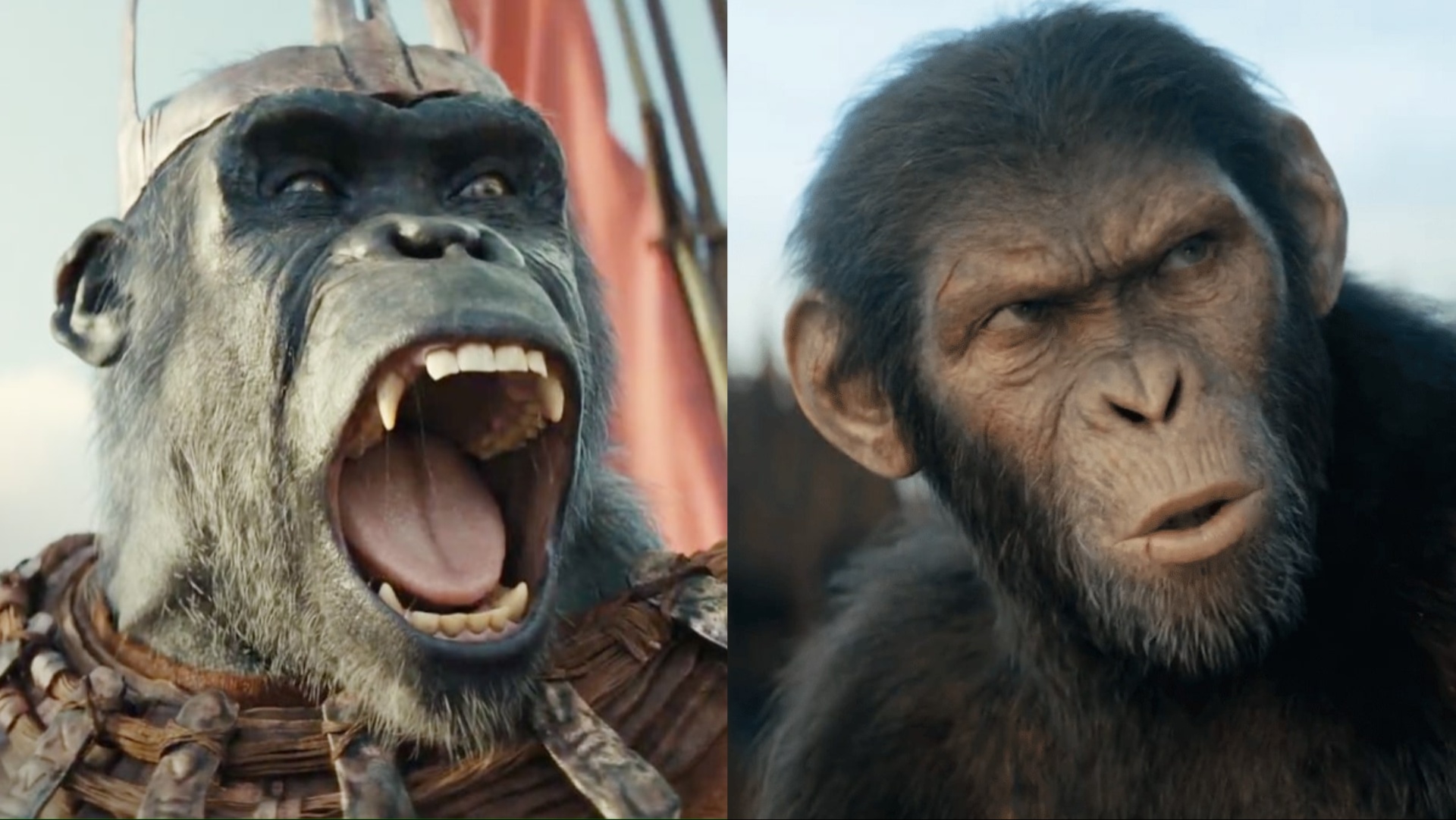
The Planet of the Apes franchise has endured for over six decades through seven books, 10 feature films and two TV series, so you’d be forgiven for losing track of where its centuries-spanning sci-fi story stands in 2024.
The latest entry in the Planet of the Apes saga, Kingdom of the Planet of the Apes, comes 61 years after the publication of Pierre Boulle's novel La Planète des singes, and 56 years after Charlton Heston first crash-landed on an ape-covered Earth in the original Planet of the Apes movie. But the new film’s apocalyptic premise remains more or less identical to that which fascinated audiences way back in 1968.
Where, then, does Kingdom of the Planet of the Apes sit in the wider Planet of the Apes franchise? Ahead of the film’s global release on May 10, TechRadar sat down with its director, Wes Ball, to clarify Kingdom’s timeline, setting and cinematic universe.
Cinematic universe
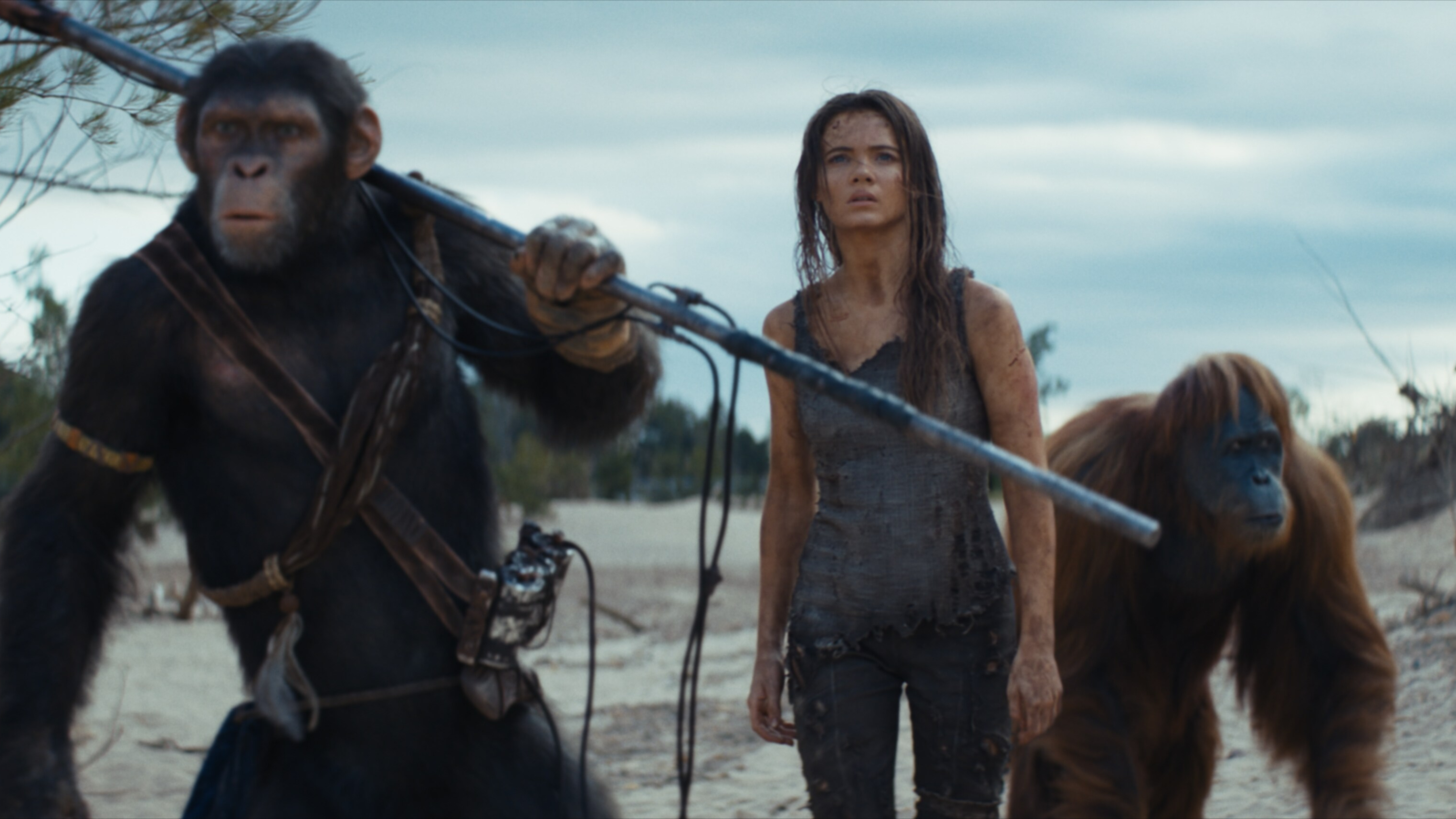
Let’s start with the film’s cinematic universe, since that provides wider context for its timeline and setting. Kingdom of the Planet of the Apes is a sequel to – in other words, a direct continuation of – War for the Planet of the Apes (2017), which itself is the third movie in a trilogy that begins with Rise of the Planet of the Apes (2011). These four films take place in the same cinematic universe, which we’ll describe, for simplicity, as the Caesar-verse.
Rise is framed as an origin story for simian intelligence, and therefore the film – and its three sequels – are narrative prequels to the original Planet of the Apes movie (1963), which is set in the year 3978, but they’re not set in the same cinematic universe. At least, not explicitly.
“The truth is,” Ball explains, “freedom is kind of built into these movies. The relationships between all of the different sequels have always been a little loose – there isn’t some really tight, defined canon that we have to follow necessarily. We’re very aware of the long legacy of these movies, but this is a franchise that’s so old, audiences’ tastes have changed. You can’t do it the same way – you can’t build up to doing exactly what the original Charlton Heston movie did [in 1968]. We don’t make movies like that anymore.”
The director continues: “We want to try and stay true to what people are hoping for, but we have some freedom, I think [because there’s a clear distinction between] the movies before us – the Caesar trilogy – and the 1968 original.”
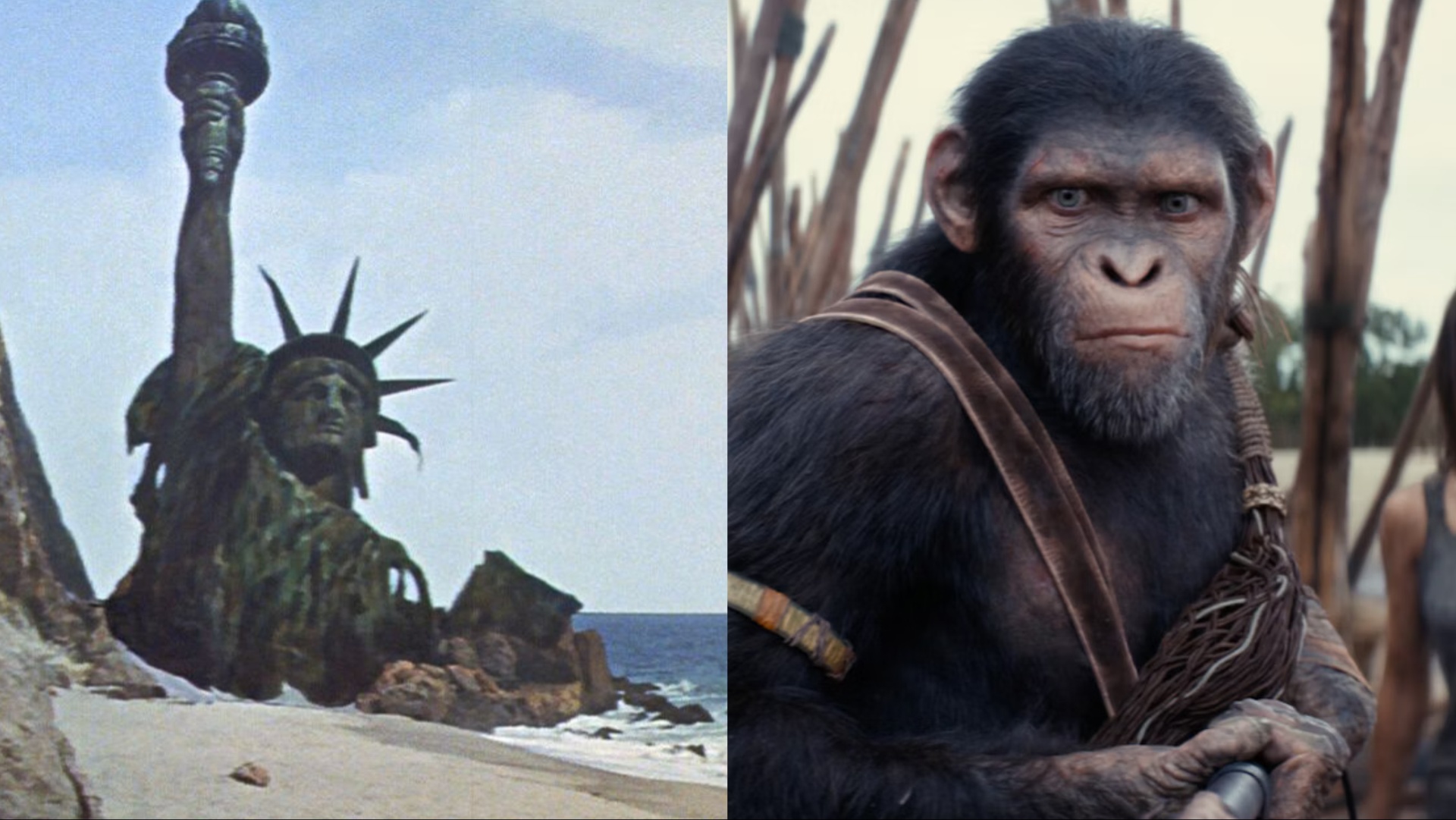
By the sounds of things, then, the Caesar movies are not set in the same universe as the original Planet of the Apes movie, even if, narratively, they could be. Mind you, that line of thinking only applies to Planet of the Apes and its sequel, Beneath the Planet of the Apes (1973), since several of the original movie’s four sequels – namely Escape from the Planet of the Apes (1972) and Conquest of the Planet of the Apes (1973) – are set during modern times, rather than 3978 onwards (i.e. they take place before Rise, which wouldn’t make sense).
There are, however, many (many!) Easter eggs in the Caesar-verse movies that directly allude to the original Planet of the Apes movies (more on these later), and Ball hasn’t entirely rubbished the idea future Caesar-verse sequels might come full circle and show the moment at which Charlton Heston’s character – or a version of him – crash lands on Earth in 3978: “I’m sure many people want that. But we’ve got a lot of story to tell before that happens.”
Incidentally, Tim Burton’s 2001 Planet of the Apes movie can be thought of as a standalone entity.
Timeline
Several online synopses for Kingdom of the Planet of the Apes suggest that the film takes place exactly 300 years after War for the Planet of the Apes (2017), which itself is set in 2028 (or thereabouts). If that were true, Kingdom takes place in the year 2328. However, in the opening credits to the new film, no specific date is given – instead, it says events take place “many generations” after the events of War – and Ball is keen to retain that ambiguity.
“We never really put a date on it to be honest,” the director explains,” which was a brilliant move on our writers’ part. I think it's good for people to have their own interpretation of what [that time jump] is. It's long enough that Caesar’s legacy has been lost, and that the landscape around the apes has slowly collapsed into nature. It’s enough time for myth and legend to have taken over.”
Setting
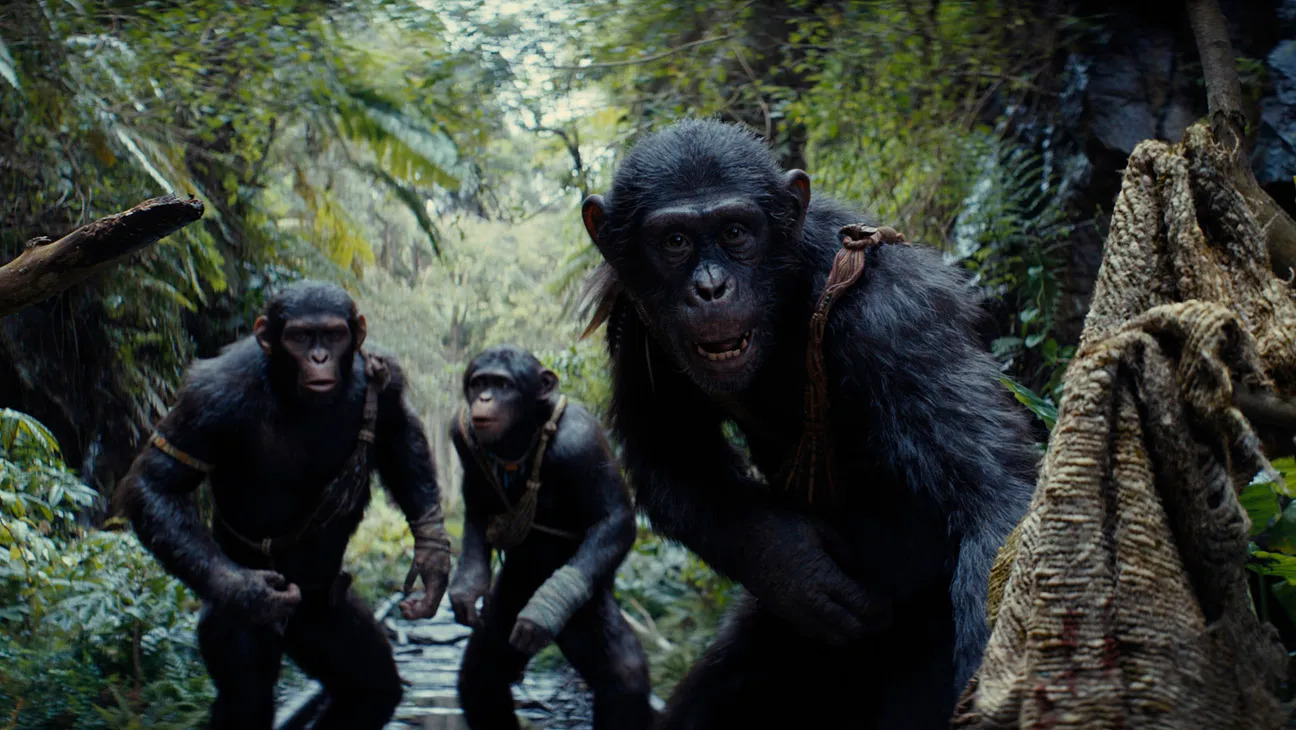
Every movie in the Caesar-verse is set on the West Coast of the US. Rise and Dawn are set in or around San Francisco, while War is set slightly farther north, in Washington or Oregon (filming took place in British Columbia, Vancouver and Alberta).
The production notes for Kingdom explain that Ball had “always envisioned the setting of the film as non-specific but somewhere on the West Coast,” and although it’s never confirmed, we can make an educated guess that events take place in the Los Angeles area.
The majority of on-location filming for Kingdom took place in Australia, because, as Ball explains, “they have a lot of eucalyptus trees in Australia, as we do in Los Angeles, and the quality of the light is similar.” Clearly, then, Ball wanted to replicate the appearance of a post-apocalyptic Los Angeles in Kingdom by filming in Australia. A huge overgrown airport (LAX?) also features prominently in the film, which is telling.
Why move events back down south? “We didn’t want to go back to Vancouver to shoot, where the previous three movies went, because although it has this beautiful, overcast light, it’s a dark and brooding look,” Ball says. “We wanted to go out into the light. This movie is a new beginning. It’s a new day for these apes, who are entering the next chapter of their existence. We wanted ugly, harsh sunlight.”
The Nova reference
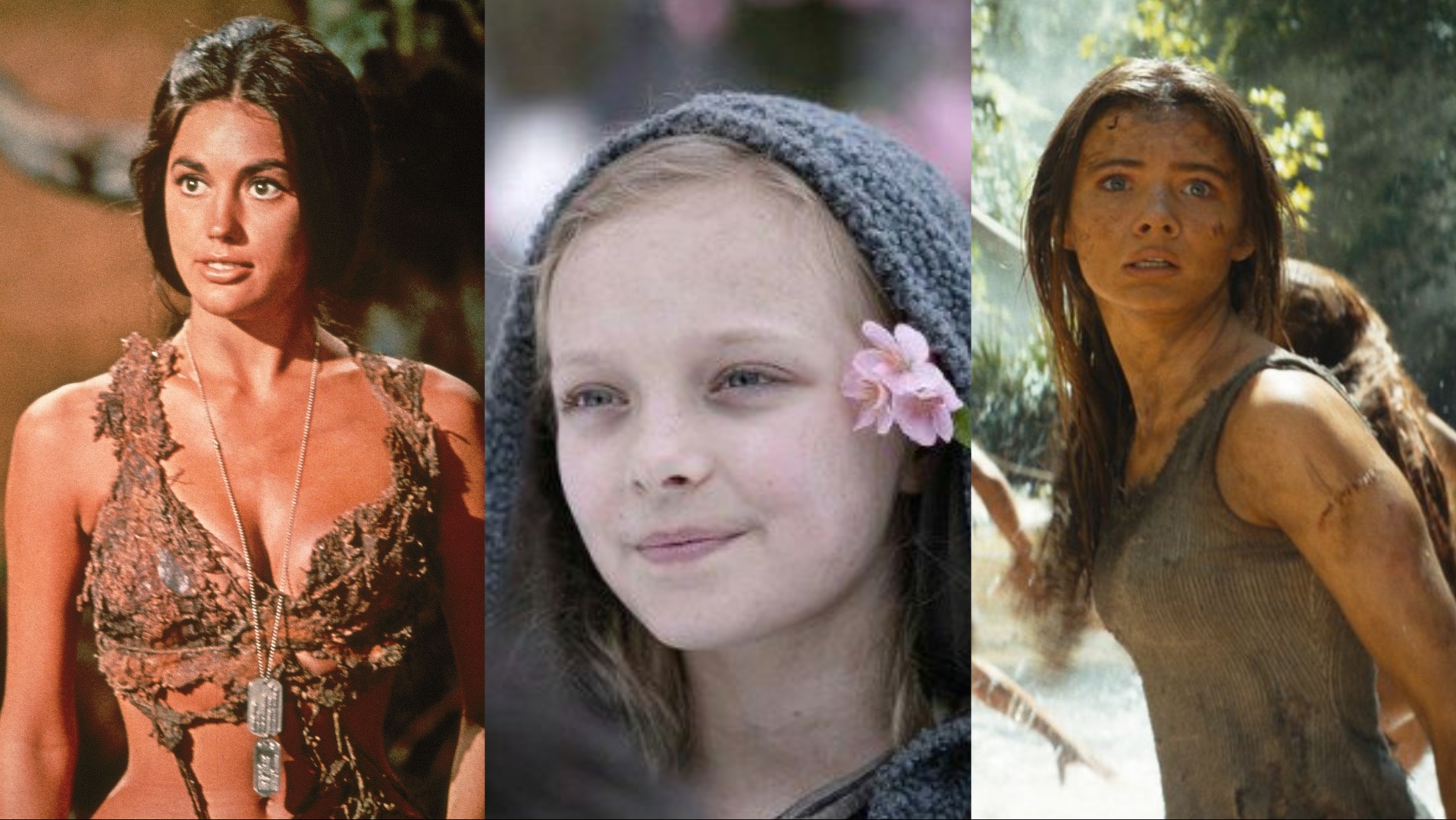
Mild spoilers for Kingdom of the Planet of the Apes follow
As alluded to in an earlier section of this explainer, the Caesar-verse movies make several explicit references to the original Planet of the Apes movies – despite not being set in the same cinematic universe – as well as to each other. The most explicit of these references is the repeated use of the name Nova.
In Kingdom, Freya Allen’s human character, Mae, is initially called Nova. Raka, the film’s scholarly orangutan, explains that all humans, and therefore Mae, are called Nova by the apes for an unknown reason (“it was from Caesar's time,” he says). As the audience, we know that Caesar’s best friend, Maurice – another scholarly orangutan – attributed the name Nova to the mute human girl in War after coming across a rusty Chevy Nova symbol. In light of what we learn from Raka in Kingdom, Caesar’s clan of apes presumably gave the same name to all humans they encountered thereafter.
But Nova is also a mute human character from the original Planet of the Apes movie. Played by Linda Harrison, this Nova is the love interest of Taylor, the astronaut who crash-lands on Earth in 3978. Given that far-flung timeline, there’s no way that either Nova character from the two most recent Caesar-verse movies is – or will ultimately be revealed to be – the same Nova character from the original Planet of the Apes movie. However, in Kingdom, Freya Allen’s Nova does perform her own version of Harrison’s iconic “Taylor!” scream, which – are you keeping up? – can be thought of as a reference within a reference.
Ball clarifies: “No, it’s not the same Nova. But there is a scene in the movie where we touch on that a little bit. There are lots of little connections between our movie and the legacy Apes movies. We even have a little bit of Beneath in this movie, in a weird way.”
Incidentally, just to make your head spin even more, ‘nova’ is derived from the latin word ‘novus’, meaning ‘new’. Who’d have thought that a franchise about anthropomorphic monkeys could be so complex?
Kingdom of the Planet of the Apes is now playing in theaters worldwide.







